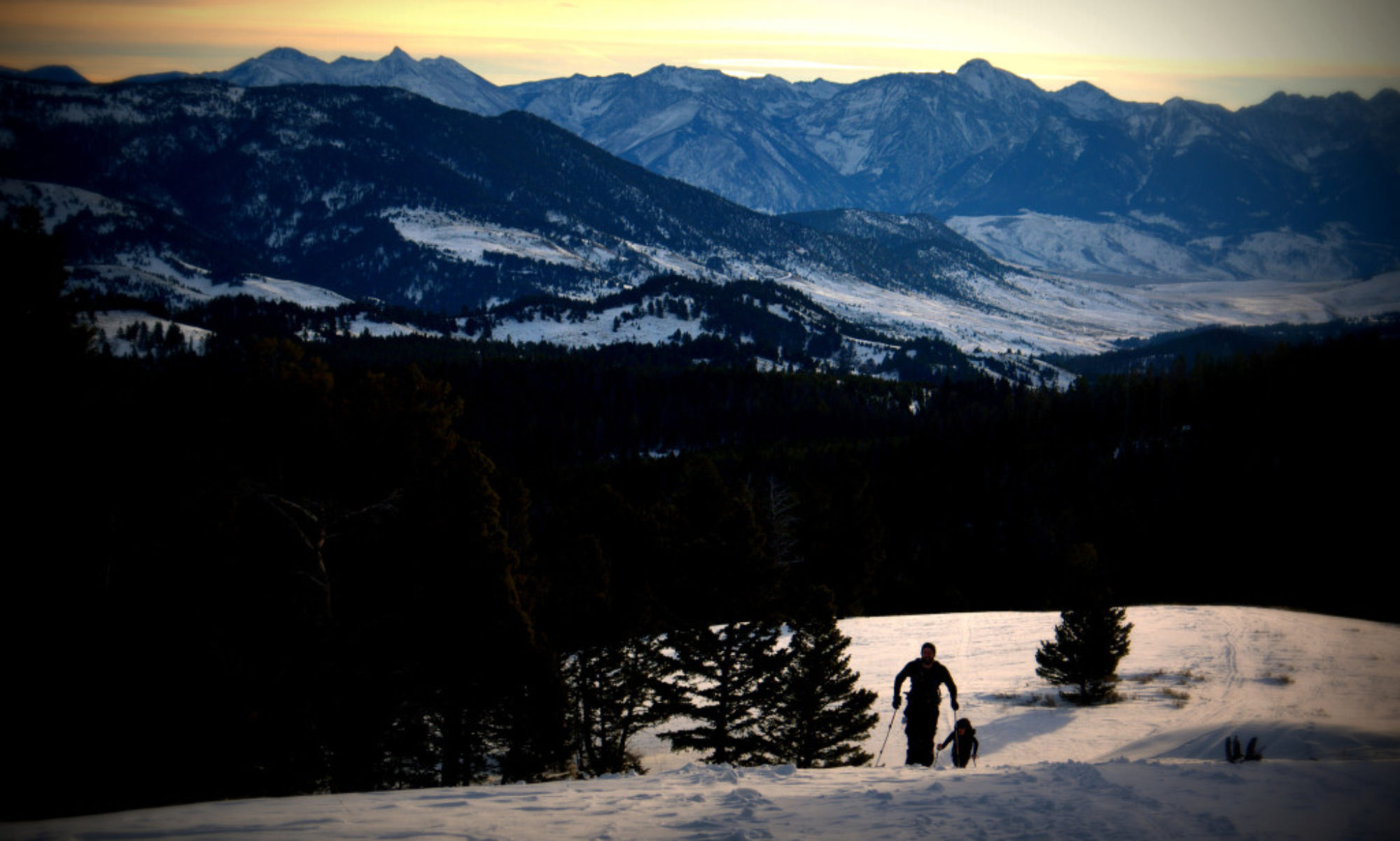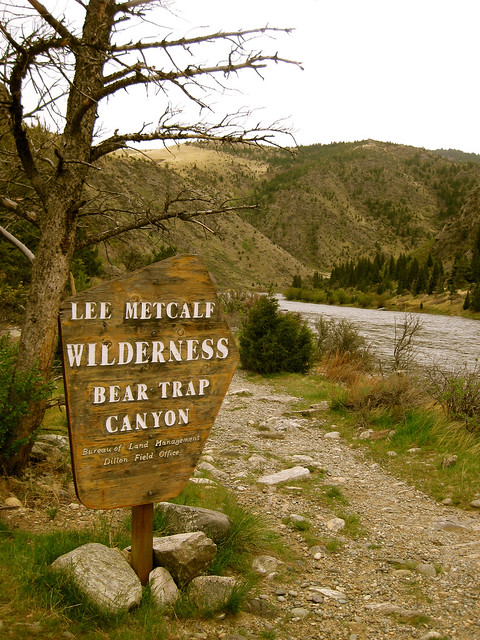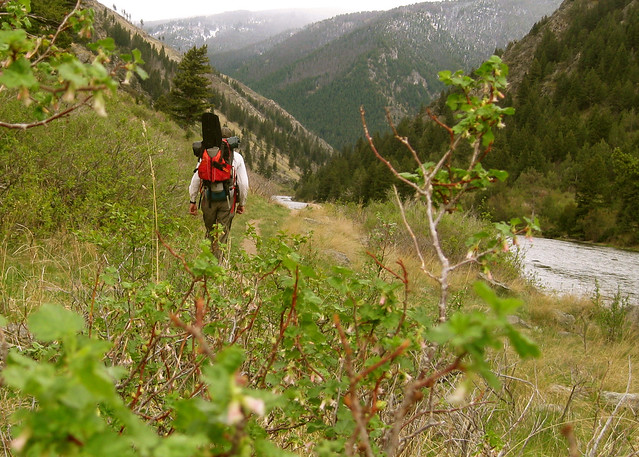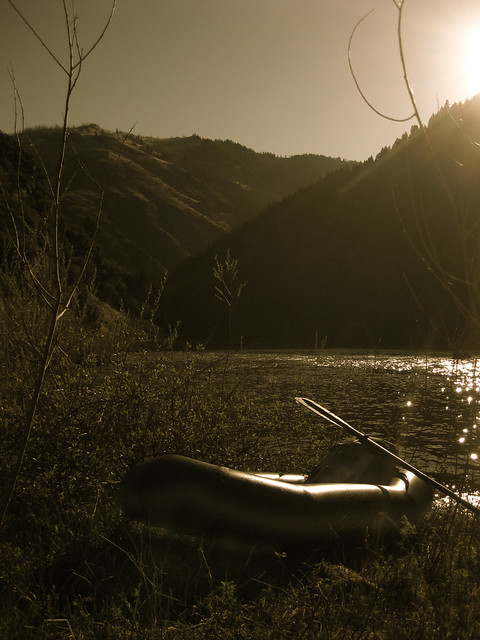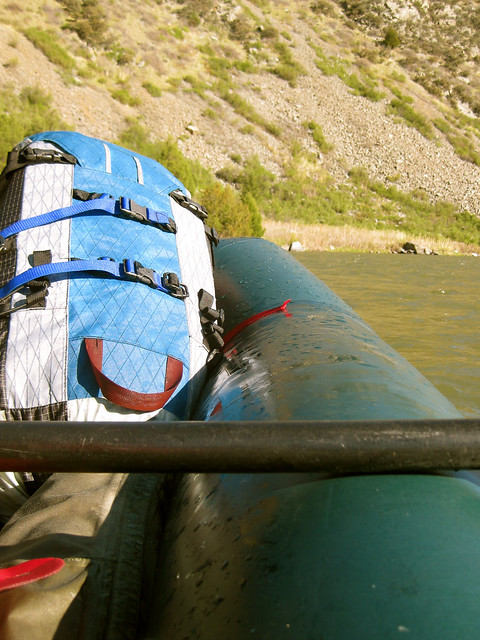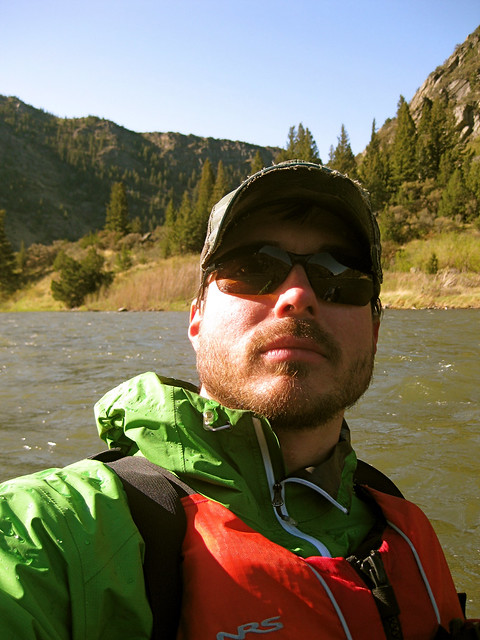Although many feet of new snow began to fall in the high country on Thursday evening last week and friends were planning bids on a local peak I’ve wanted to ride for sometime I couldn’t get the idea of either bicycle touring or packrafting out of my brain. The ski trip group was leaving on Friday night and since I had a prior commitment it solidified my plans to head out into the woods on Saturday afternoon. Rain fell steadily most of the day Saturday and it was cold but my excitement level was high as I drove my trusty Toyota 40 miles to the West to a little chunk of Wilderness called Bear Trap Canyon.
In tow was my workhorse pack, eVent bivy, PFD, rain gear, cooking supplies, and a vintage Alpacka packraft (sans spray skirt). I left the trailhead at approximately 16:30 planning to hike either until 18:00 or until I reached the base of a class IV / V rapid that would mark my put-in the next morning. I reached the rapid a few minutes before six and opted to inflate the boat, pack it with my gear and ferry across the river to a level area that looked prime for camping. I hadn’t been in a raft in a couple seasons so it felt good to handle the paddle and feel the current as it swept me out of the river-side eddy. My pulse quickened as I paddled at a 30 degree angle toward the opposite shore, then spun halfway ’round to back ferry to a good take-out.
After about fifteen or twenty minutes of hunting for the perfect flat spot to lay my bivy I was delighted to stumble upon a small chunk of flat ground with a beautiful sandy beach just below it. One nicety of camping on the opposite side of the river from the trail and practicing Leave No Trace camping techniques is that a pristine and beautiful campsite can be found that puts the typical dirty, packed-out USFS social sites that appear along popular trails to shame.
The beach made for a nice cooking spot located 10 or 12 meters from my sleeping spot. A bit too close for typical grizzly bear country but I opted to not worry too much and just went with it. The sand on the beach also allowed me to dig a small pit in which I built a campfire starting at nightfall. There was plenty of dry driftwood and I was able to remove almost all trace of the fire the next morning leaving my camp very pristine.
I awoke at 6:30 to temperatures around 37 deg F (3 deg C) having zipped my bivy completely closed over my face around 4am to keep warm. I had chosen my 180gsm synthetic quilt paired with a 240gsm hoody. For sleeping mats I had a 3/8″ foamy atop a torso-length inflatable. The foam backpanel from my pack also pulls out and I supplemented my underfoot insulation with this
Around 7am I climbed forth from my cocoon, pulled down my bear hang, lit up my Caldera Cone and brewed up a cup of Nescafe along with some warm water for my granola. It was early and I savored the time outdoors listening to the river flowing along at 2,700 CFS. I hadn’t been packrafting in quite a long time so I had feelings of trepidation but was also excited to float this fun few miles of water.
After breakfast I quickly packed up my gear and strapped my back to the bow of the boat after being sure to temper and re-inflate everything so the tubes were as full of air as possible. The section of river I was about to float had plenty of class II and III rapids and I wanted as much maneuverability as possible.
The boat I’m using is pretty ancient and has no seat nor spray skirt so I folded my inflatable sleeping mat to use as a seat and tucked my rain pants and gaiters in as much as possible to help with the inevitable wave over the front of the boat and pushed off. The walk into camp the previous day paralleled the river so I was able to make mental notes of the majority of the flow except for the very first section I was to encounter which was hidden below a cliff. I opted to ferry immediately across the river, exit my boat and scout the upcoming section. I determined it was too difficult for me to attempt given that I was both out of practice in packrafting and also paddling solo. I portaged 50 or so meters around the rapid and re-entered the river this time floating the remaining 3 +/- miles continuously except for one break in which I stopped to empty water from the boat and another in which I held onto a rock giving myself a moment to scope an upcoming section of waves.
It felt really good to get out on my first post-winter season trip. It was short but provided the opportunity to make use of both my backpacking gear as well as the packrafting equipment. I look forward to continuing using the raft on some upcoming trips this summer as well as sharing some words and photos.
